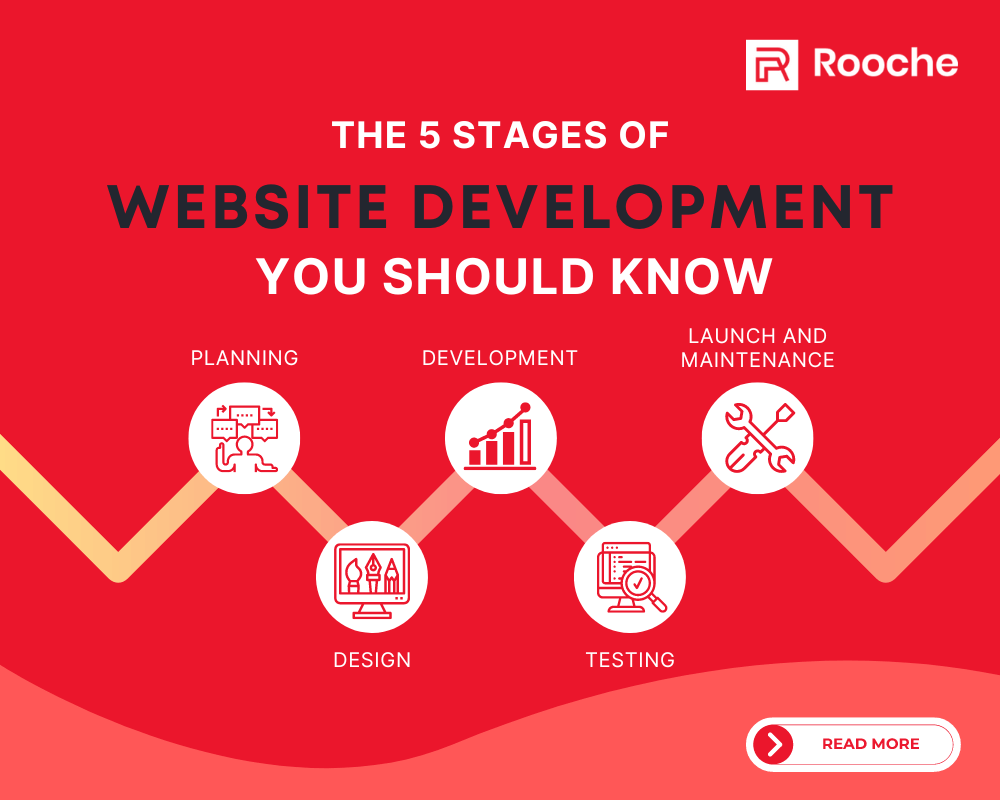The Four Elements of User Experience You Need To Know
User experience is one of the most important aspects of a website. It is how easy or difficult it is […]
Dec 8, 2022
Dec 8, 2022

It’s important to remember that website development does not happen instantaneously. Many moving parts must be in place before your site can go live. You have to consider the site’s design, coding, and testing. You have to make sure that it is responsive to various devices, even including mobile devices such as tablets and smartphones. The website’s coding needs to be done right so that it can load up correctly in all web browsers. Even if one element is off, it can cause the entire site not to load up correctly.
The average web project takes about 8 weeks, but many factors can affect the timeline for your particular project, including:
Websites don’t just appear out of thin air. It took a lot of workforces and thought to make the right site, and it’s no small task. Each stage has its challenges and tasks that need to be completed before moving on to the next stage.
The first stage of web development is planning and strategy. This is the part where you decide what you want to accomplish. Do you want to make an app? A blog? A farm-to-table cooking show? An online community for people who like to wear socks with sandals? Whatever it is, that’s great! You can do this.
In this stage, you’ll map out how many features your app or site will have, what it will look like, how it will interact with users, and how much functionality you need. It would help if you also thought about what content will be featured on each page.
Before you move on to the next steps—designing and coding your site—make sure you have a clear vision of your site, who will use it, and how they’ll use it.
The next stage in web development is wireframing and designing.
After a website’s architecture has been decided upon, it’s time to create a wireframe. A wireframe is a site blueprint that establishes how the different pages will fit together and what features will be on each page. Creating a wireframe is an important step in developing any website because it helps designers organize information in a way that makes sense for both users and search engines alike. It also allows them to ensure that their design ideas are well-organized and visually appealing.
Once the wireframe is approved, designers can start creating mockups of what each page will look like (usually called mockup pages). These mockups are then used as reference points for developers who create the actual HTML and CSS for each page (this process is known as frontend development).
Now that you’ve decided on the design of your site, it’s time to move on to the next stage: web development! This is when all the magic happens and when you’ll get a first glimpse of how your site will function. Coding can be tricky, but if you’re working with a web developer who knows her stuff, she should be able to build you a highly-functional site that meets your needs.
Now that you’ve developed your site, it’s time to move on to the next stage: testing! Testing your website before it goes live is crucial if you want to make sure that your website works properly and your users have an enjoyable experience.
Testing will help you make sure your site is ready for prime time. You’ll be able to check things like:
This means you’ll be going through the entire site with a fine-toothed comb and making sure it’s perfect in every way. All of these questions—and more—will be answered during the testing period.
The last stage now in developing a website is the launching and maintenance. The website developer must be able to come up with an optimized plan to make sure that your website will be able to keep your site running. Many have considered this the most important part of the process, especially for new businesses.
What’s more, you’ve got to keep up with the site’s maintenance, including installing updates to the theme, cleaning out the database tables, or making sure that your plugins are compatible with the latest version of your theme.
If you are a business owner, your website is one of the most important assets that you can own. Not only does it help you build credibility, but it can also help you reach a larger market and increase your sales.
However, you need to understand that building a website is not as easy as 1-2-3, and there are some basic things that you need to learn before you can build your website.

User experience is one of the most important aspects of a website. It is how easy or difficult it is […]
Dec 8, 2022

Are you looking to improve user experience on your website? If so, you’re not alone. As technology evolves and the […]
Apr 4, 2023

Color plays an important role in web design. It’s not just about making a website look pretty – it can […]
Feb 21, 2023
Join our newsletter and be the first to receive future promo and sale updates from Rooche!